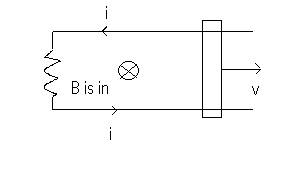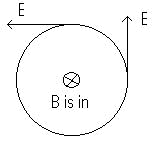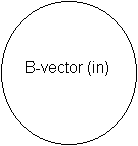Ch. 30 |
| Ch. Summary--Sec 30.7. (Summaries for
the other sections are in Quiz 12 ): There are two types of current that appear in the Ampere-Maxwell law, conduction and displacement current, as discussed in class: Here, i = conduction current and id = displacement current. The rules for finding the direction of the magnetic field are the same as before. For example, for a cylindrically symmetric situation, point your right thumb
in the direction of either id or i and your right fingers will
wrap in the direction of the B-vector . |
| 36. Please read sec. 30.7 As
you can see in Fig. 30.24 and 30.25. There are two types of current that appear in
the Ampere-Maxwell law, conduction and displacement current, as discussed in class: Here, i = conduction current and id = displacement current. The rules for finding the direction of the magnetic field are the same as before. For example, for a cylindrically symmetric situation, point your right thumb in the direction of either id or i and your right fingers will wrap in the direction of the B-vector . The displacement is given by: This is the product of the permittivity of free space and the rate
of change of the electric flux. The flux is given by: Thus, the flux is: where q = the charge on the positive plate.
(b) The direction of the magnetic field in the region between the plates can be
determined from the right hand rule. Let's take a look at the front view of the system
between the plates. Below is shown the inner circle of integration used to find B. Your thumb
will point outward in the direction of the displacement current. Thus your fingers
and the vector B-field lines are in circular loops that are counter clockwise.
The inner circular loop below represents the loop of integration with radius r. Note that
r is less than R, the radius of the circular plates shown by the outer circle. These
plates have radius R = 0.10 m. The integral on the inner loop is equal to the permeability
times the displacement current from Ampere- Maxwell's law. Note that between the plates
there is no conduction current , so i = 0. Thus, The electric flux is for an area equal to that of a circle of radius r. This is because the displacement current is enclosed within the circle of radius r.
Thus, the electric flux associated with the displacement current at r = 0.05 m
is: |








